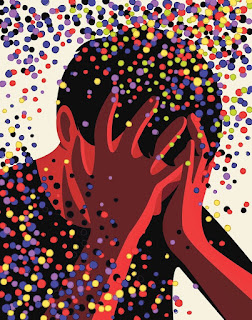K. Oktar & T. Lombrozo
Cognition
Volume 223, June 2022, 105021
Abstract
Deliberative analysis enables us to weigh features, simulate futures, and arrive at good, tractable decisions. So why do we so often eschew deliberation, and instead rely on more intuitive, gut responses? We propose that intuition might be prescribed for some decisions because people's folk theory of decision-making accords a special role to authenticity, which is associated with intuitive choice. Five pre-registered experiments find evidence in favor of this claim. In Experiment 1 (N = 654), we show that participants prescribe intuition and deliberation as a basis for decisions differentially across domains, and that these prescriptions predict reported choice. In Experiment 2 (N = 555), we find that choosing intuitively vs. deliberately leads to different inferences concerning the decision-maker's commitment and authenticity—with only inferences about the decision-maker's authenticity showing variation across domains that matches that observed for the prescription of intuition in Experiment 1. In Experiment 3 (N = 631), we replicate our prior results and rule out plausible confounds. Finally, in Experiment 4 (N = 177) and Experiment 5 (N = 526), we find that an experimental manipulation of the importance of authenticity affects the prescribed role for intuition as well as the endorsement of expert human or algorithmic advice. These effects hold beyond previously recognized influences on intuitive vs. deliberative choice, such as computational costs, presumed reliability, objectivity, complexity, and expertise.
From the Discussion section
Our theory and results are broadly consistent with prior work on cross-domain variation in processing preferences (e.g., Inbar et al., 2010), as well as work showing that people draw social inferences from intuitive decisions (e.g., Tetlock, 2003). However, we bridge and extend these literatures by relating inferences made on the basis of an individual's decision to cross-domain variation in the prescribed roles of intuition and deliberation. Importantly, our work is unique in showing that neither judgments about how decisions ought to be made, nor inferences from decisions, are fully reducible to considerations of differential processing costs or the reliability of a given process for the case at hand. Our stimuli—unlike those used in prior work (e.g., Inbar et al., 2010; Pachur & Spaar, 2015)—involved deliberation costs that had already been incurred at the time of decision, yet participants nevertheless displayed substantial and systematic cross-domain variation in their inferences, processing judgments, and eventual decisions. Most dramatically, our matched-information scenarios in Experiment 3 ensured that effects were driven by decision basis alone. In addition to excluding the computational costs of deliberation and matching the decision to deliberate, these scenarios also matched the evidence available concerning the quality of each choice. Nonetheless, decisions that were based on intuition vs. deliberation were judged differently along a number of dimensions, including their authenticity.








